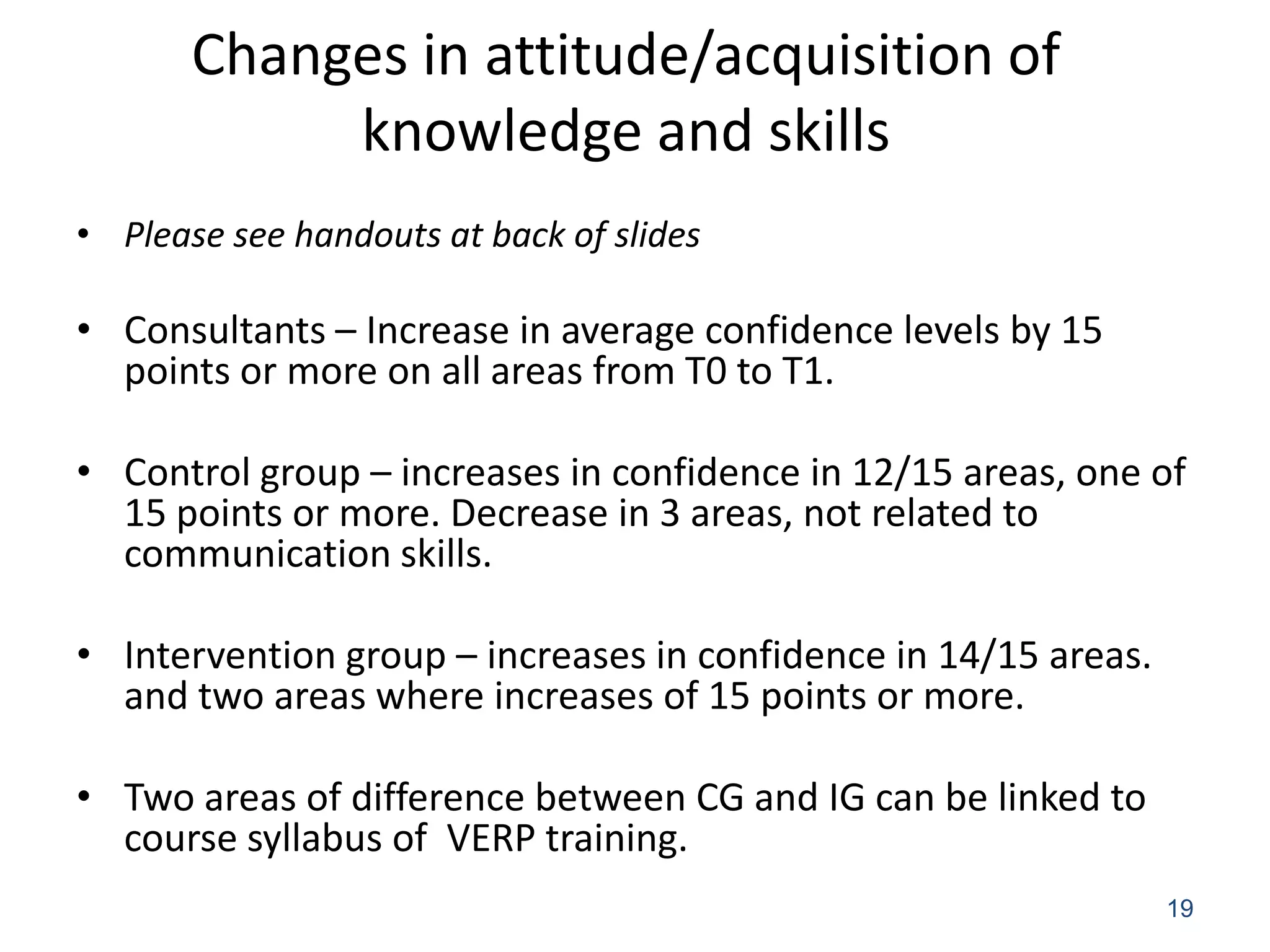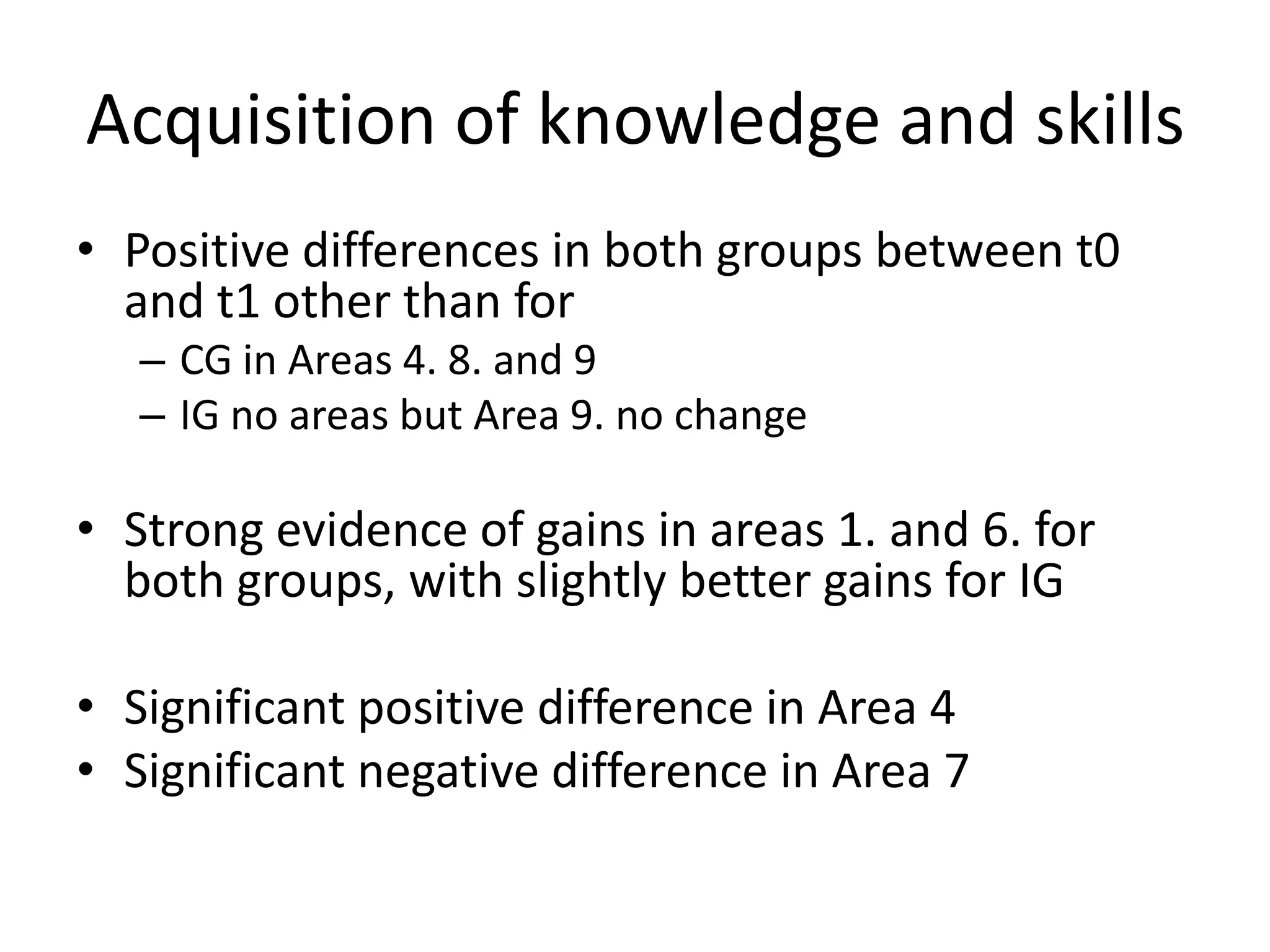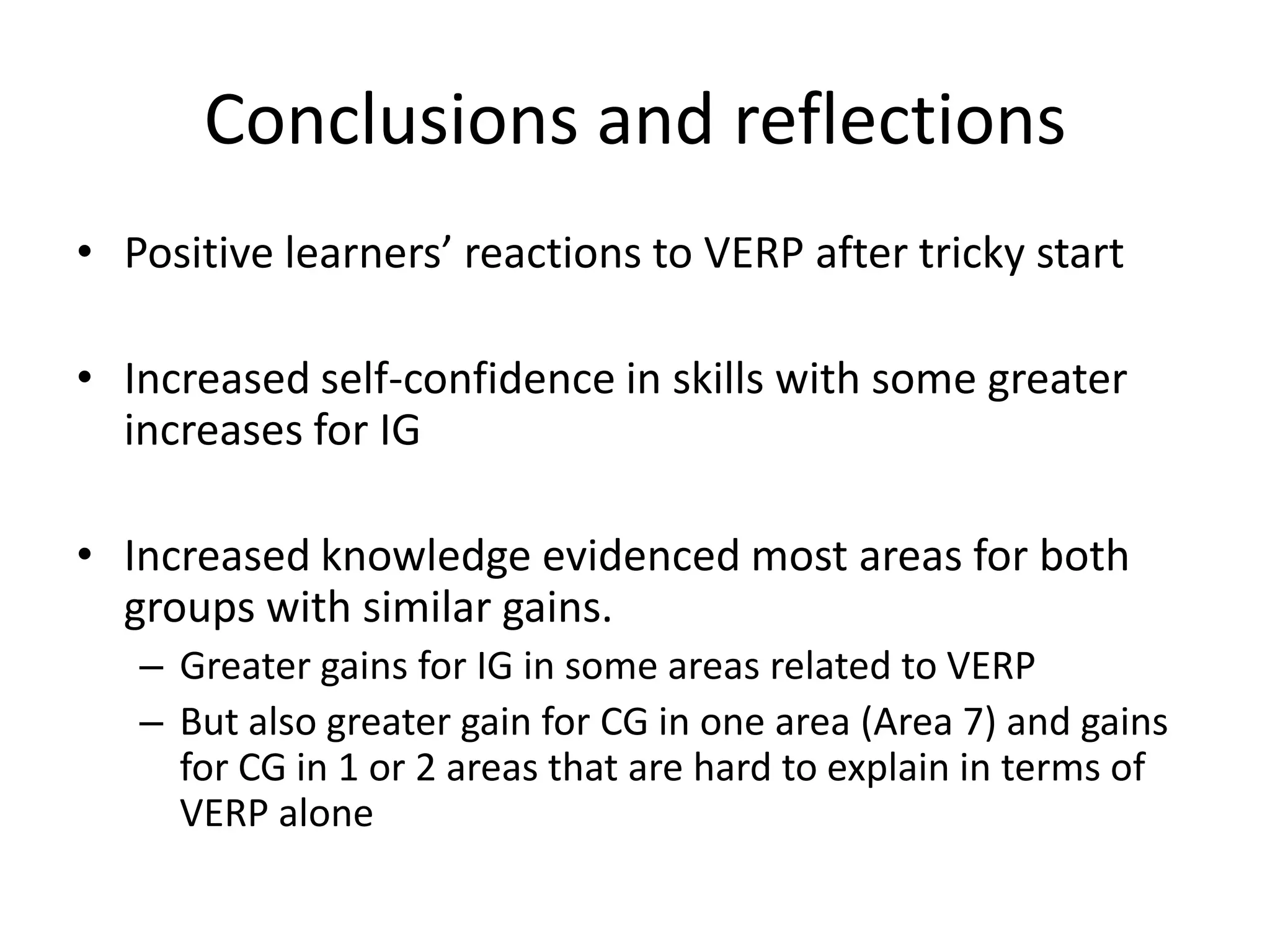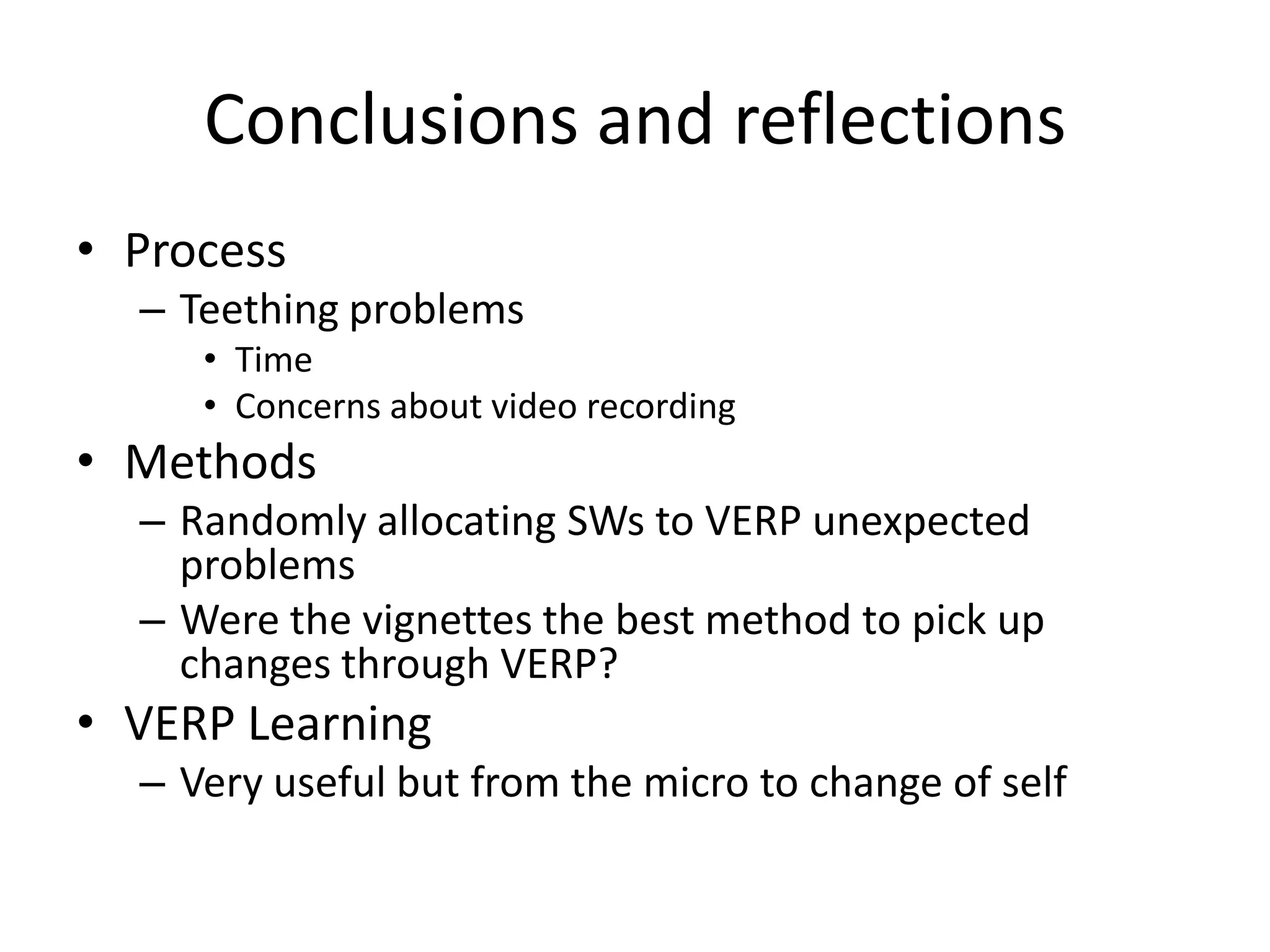The document discusses the VERP project aimed at enhancing the skills of newly qualified social workers through video interaction guidance (VIG). It outlines the methodology, training structure, and evaluations, highlighting increases in confidence and knowledge among participants, particularly in the intervention group. Key principles include a strengths-based approach to interaction and the importance of attuned communication between parents and children.
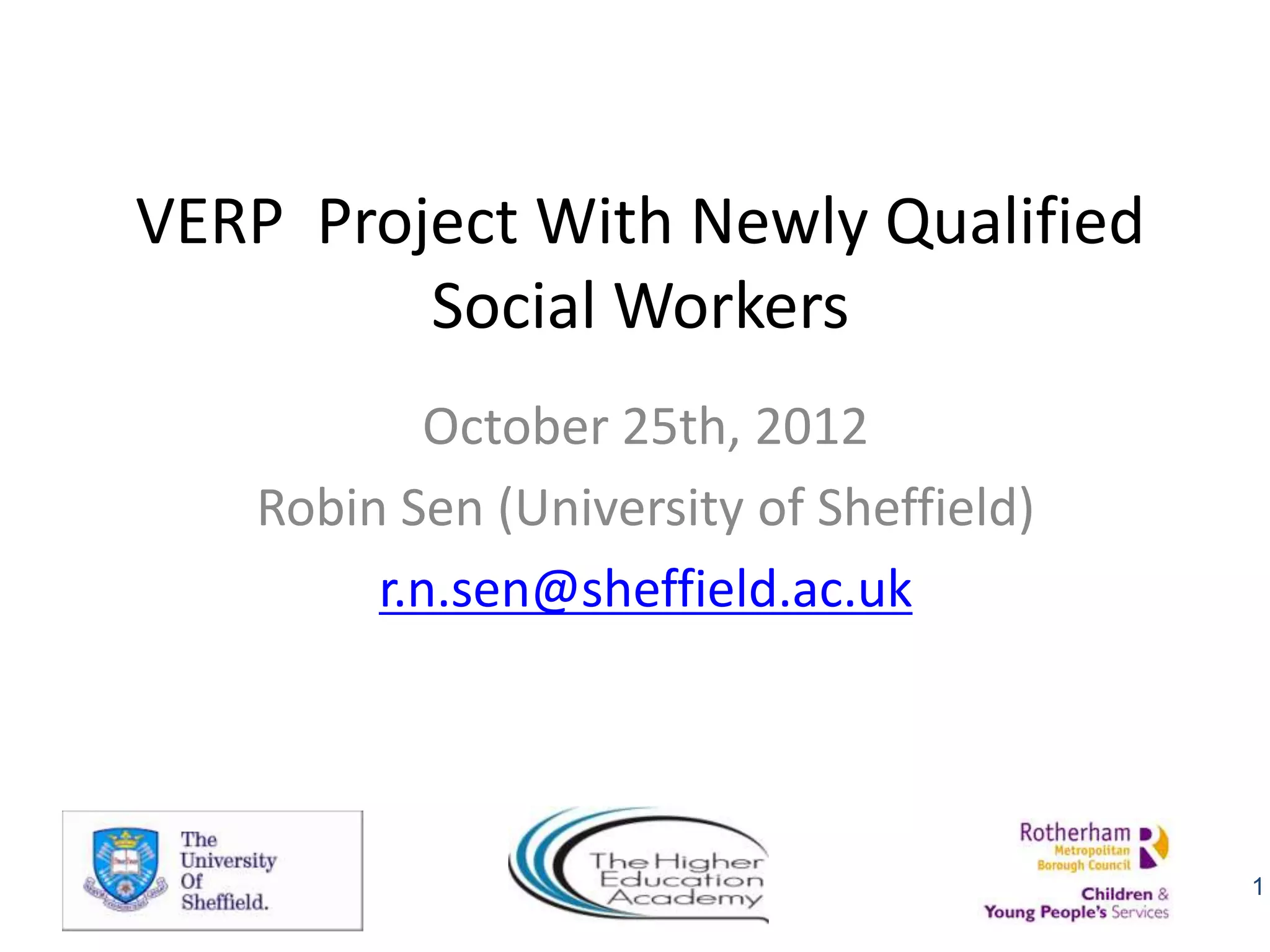
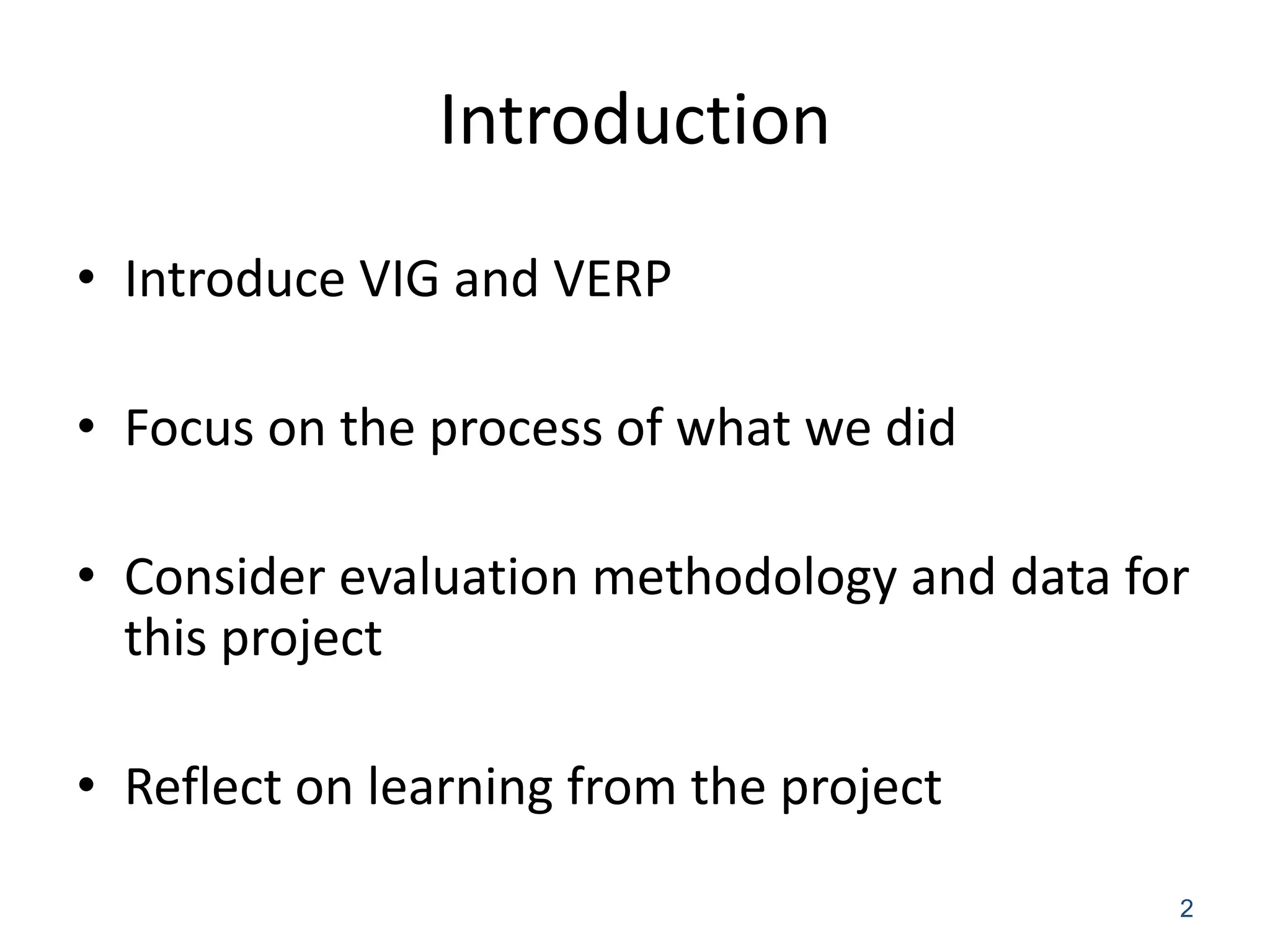
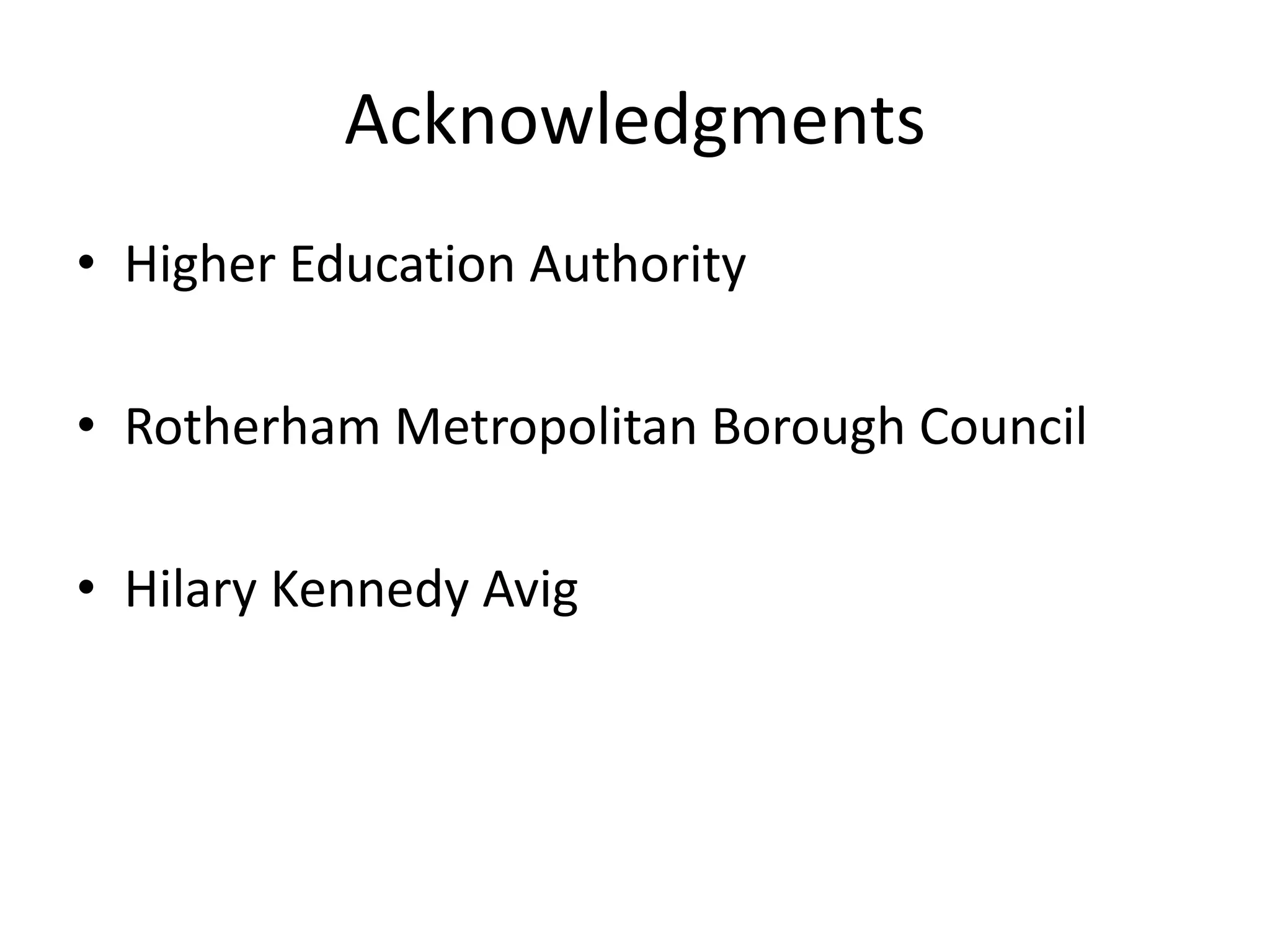

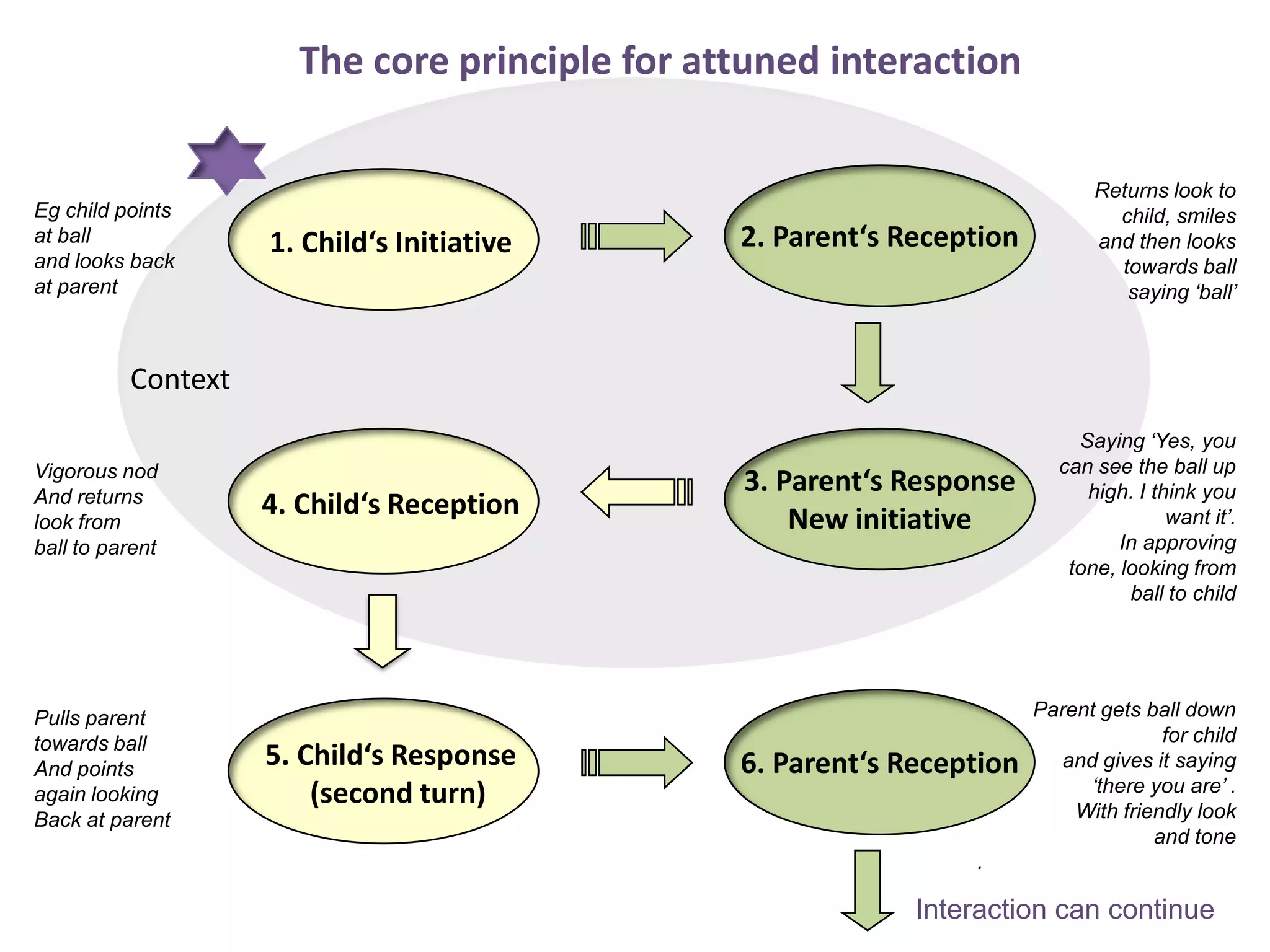


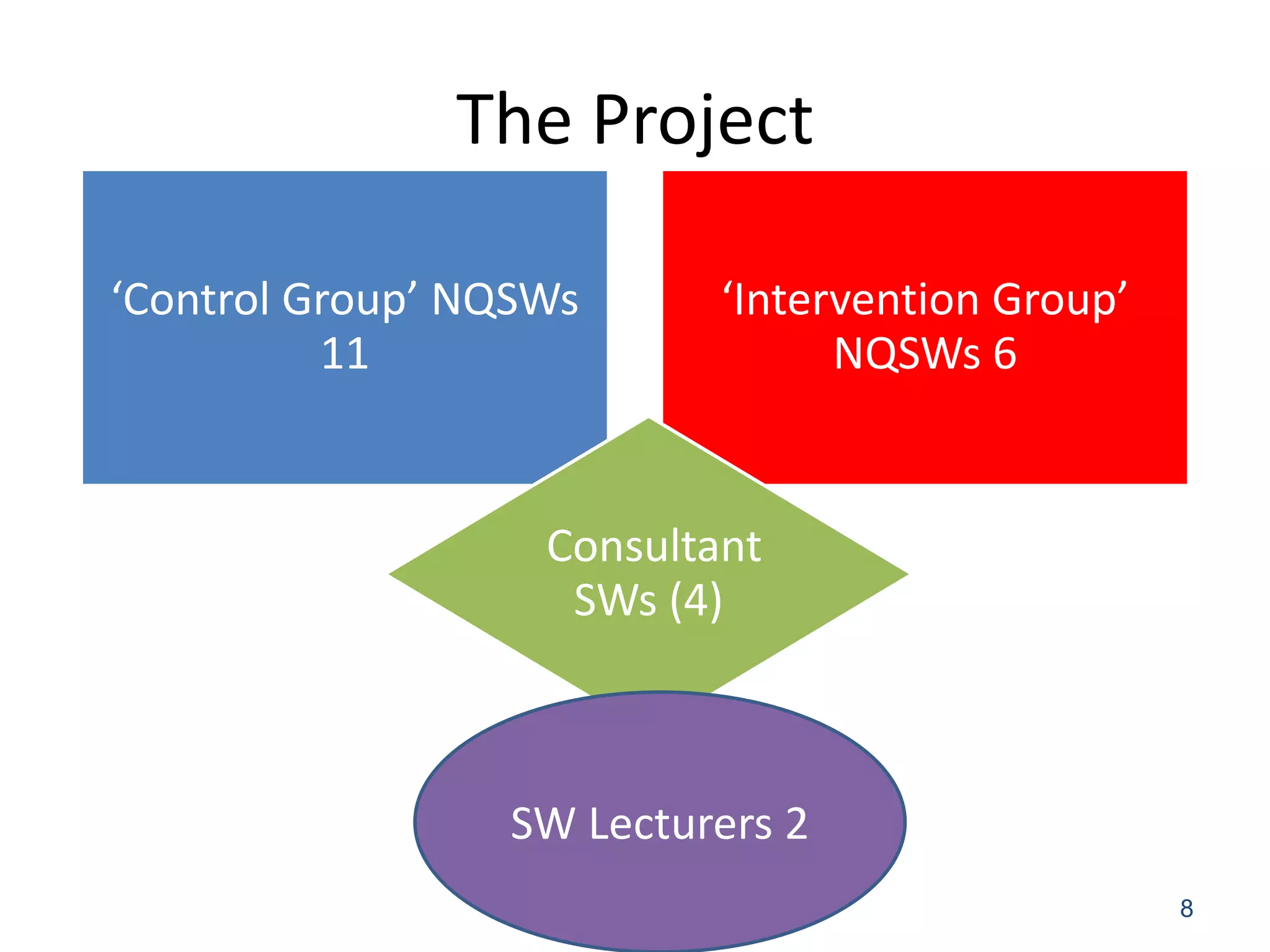

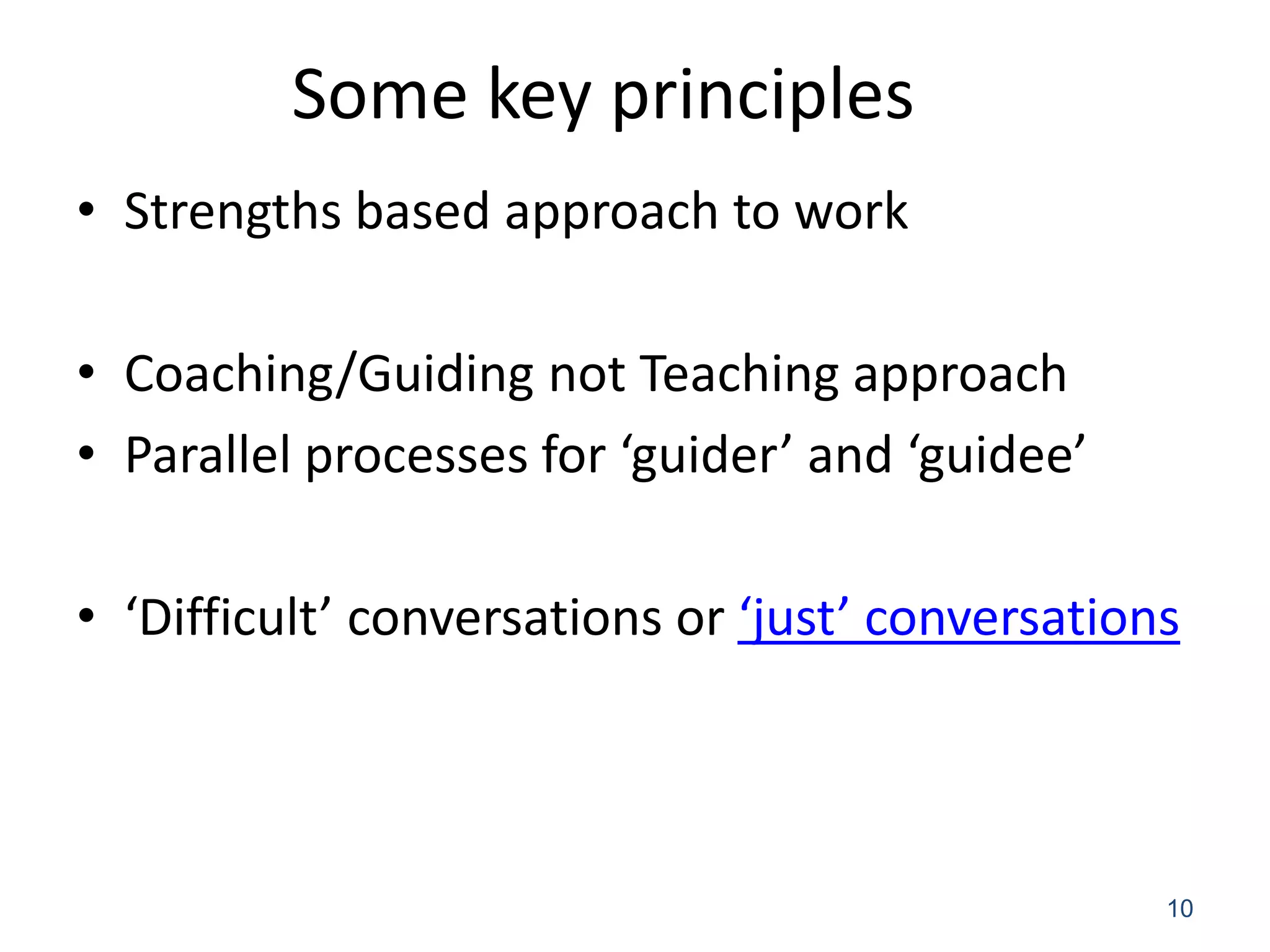
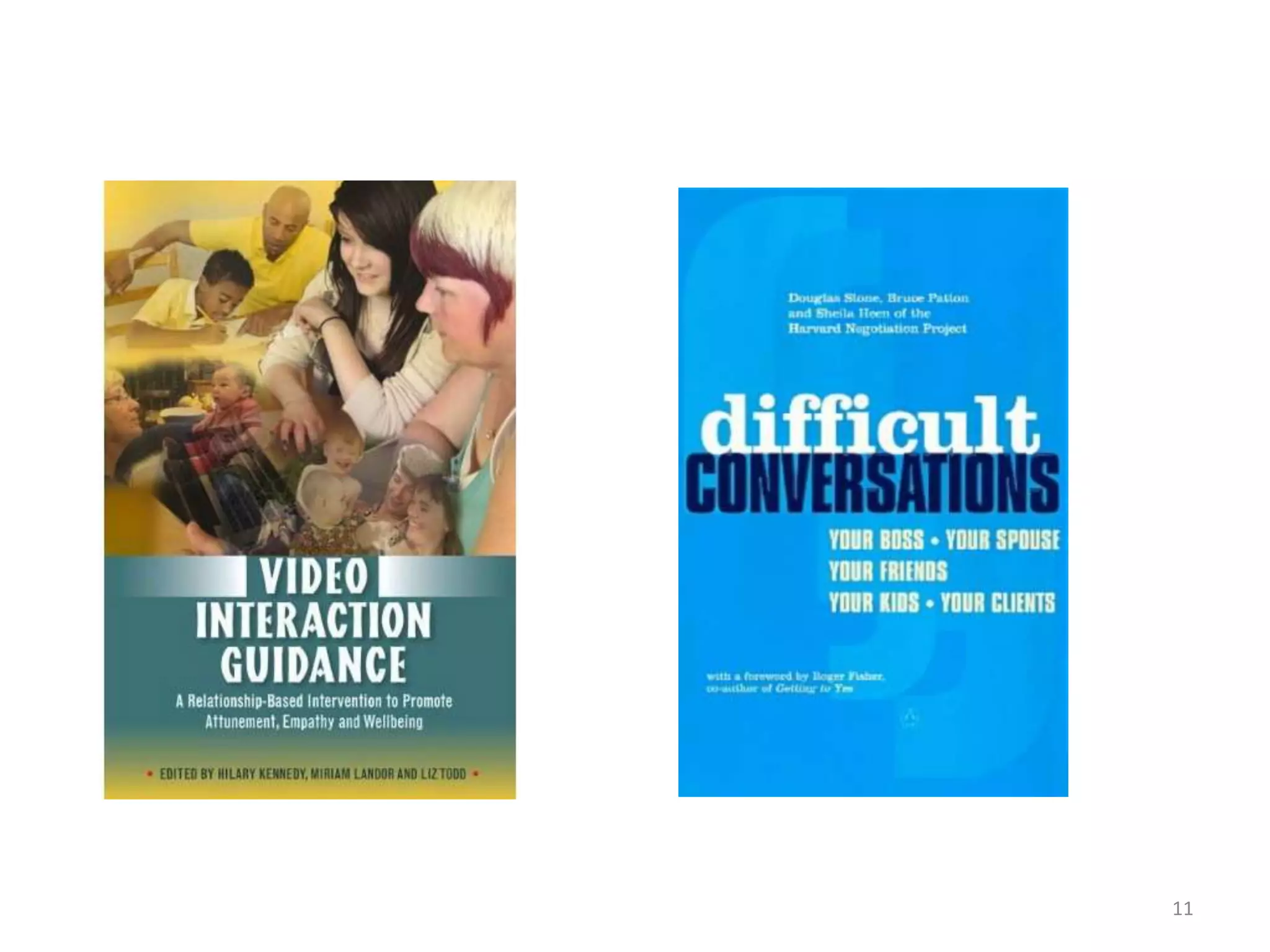
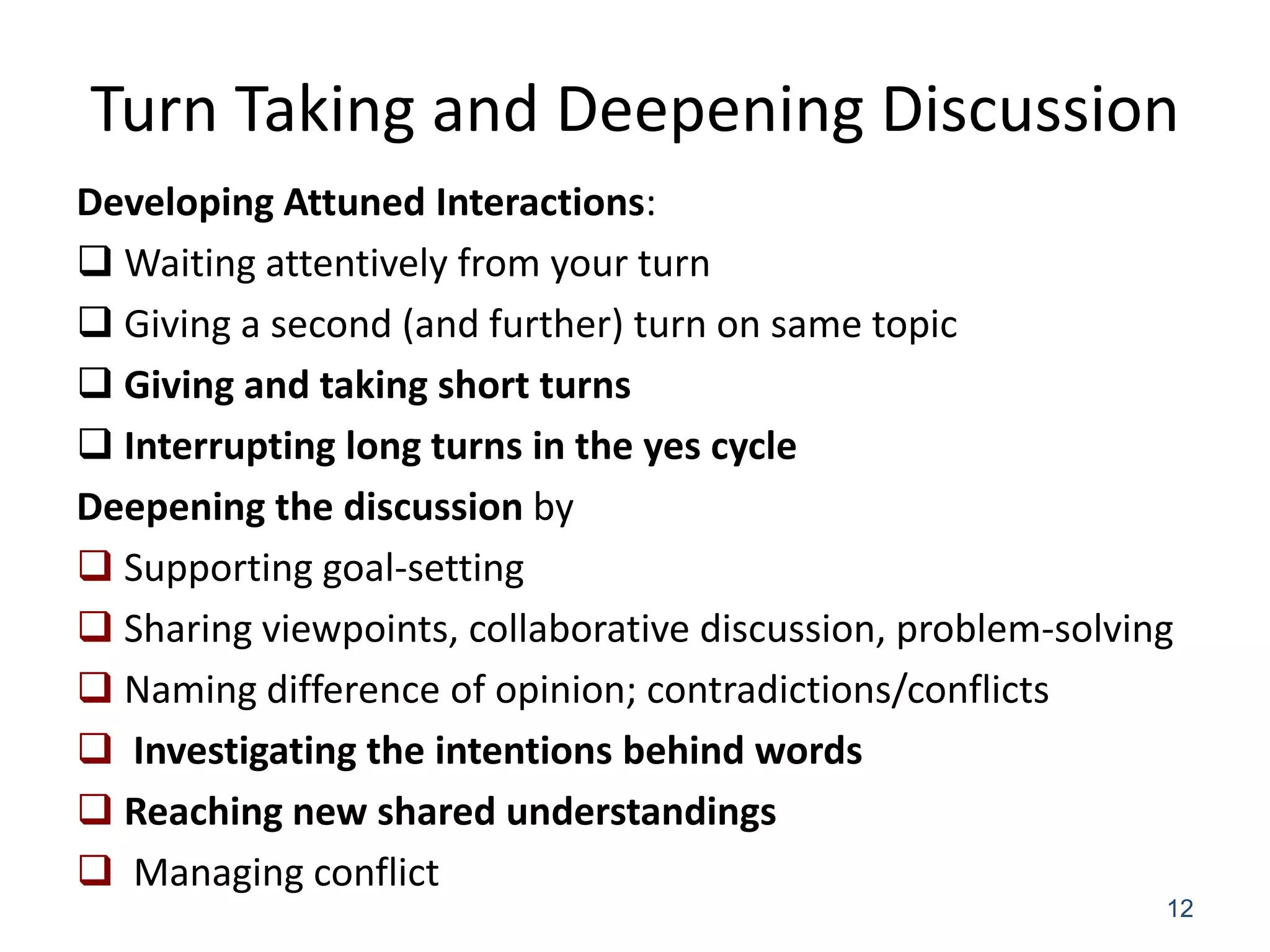

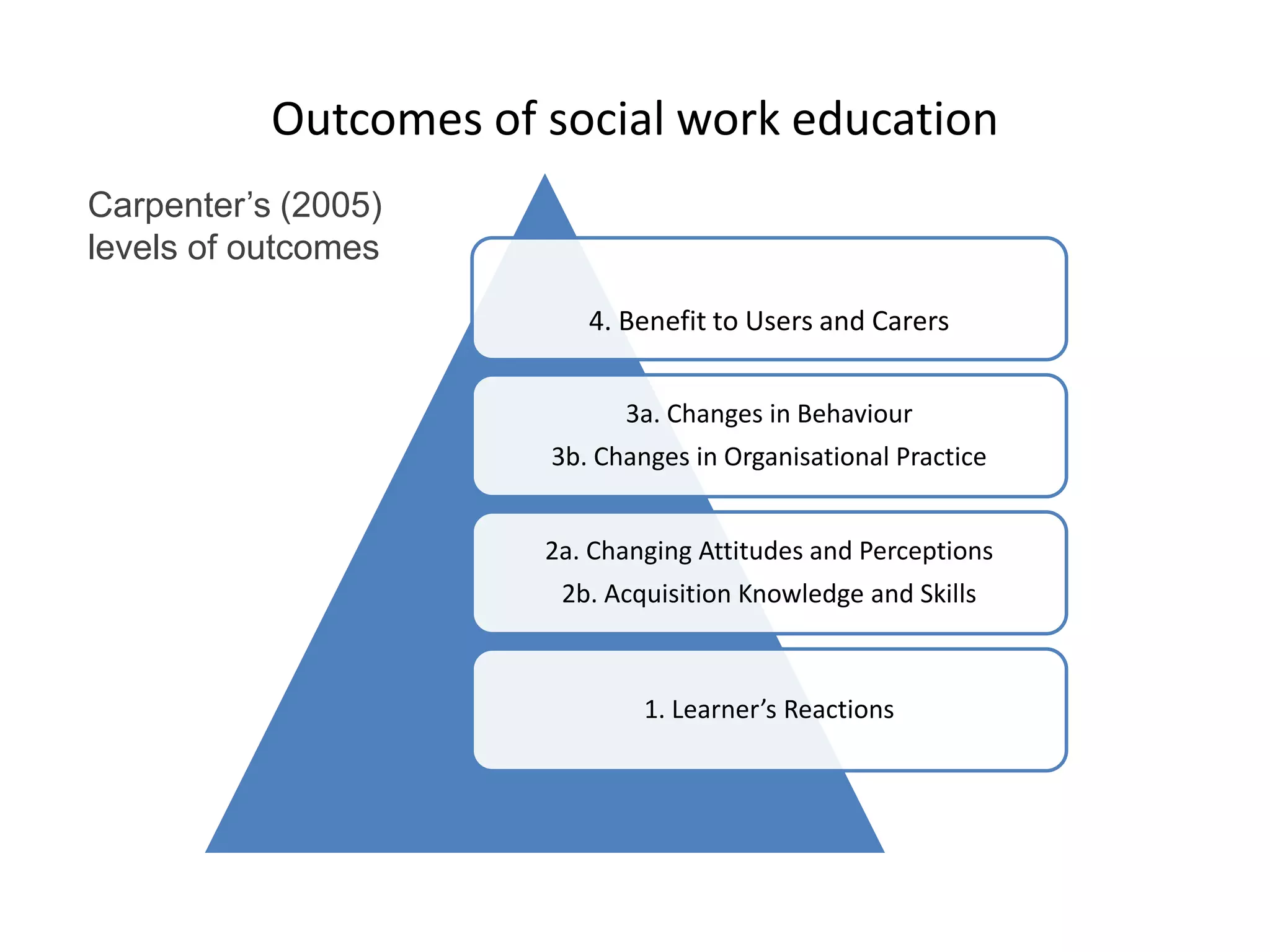
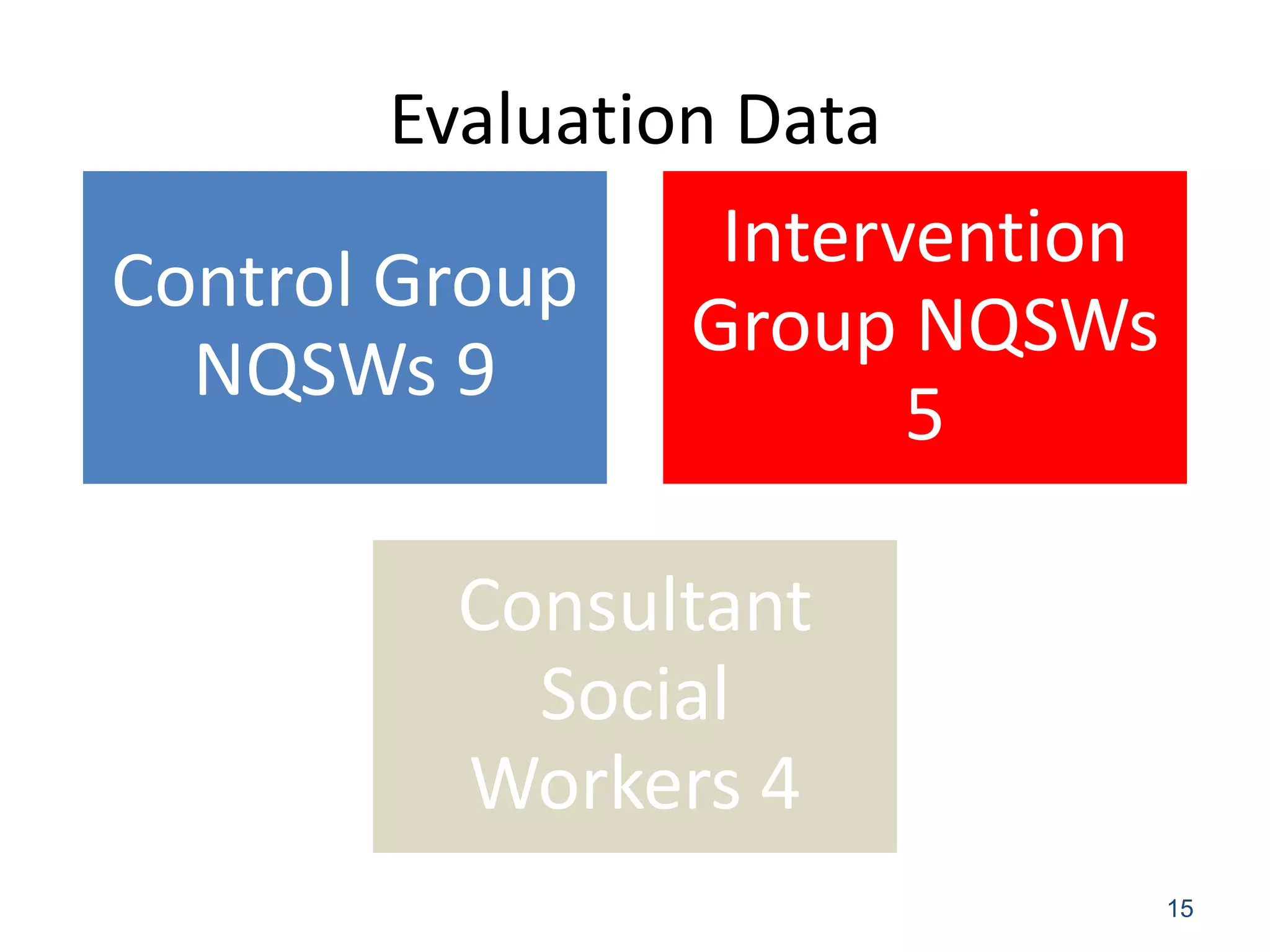
![Evaluation Design
All NQSWs
• Time 1 (1) [start of training] and Time 2 (2) [end of
training] self-evaluation questionnaire
• Vignette scenario at start (T1) and end (T2) of
training
• Open questions about their training
Intervention Group Only
• Feedback on VIG training
16](https://image.slidesharecdn.com/verpprojectwithnewlyqualifiedsocialworkers-121217105834-phpapp01/75/Verp-project-with-newly-qualified-social-workers-16-2048.jpg)
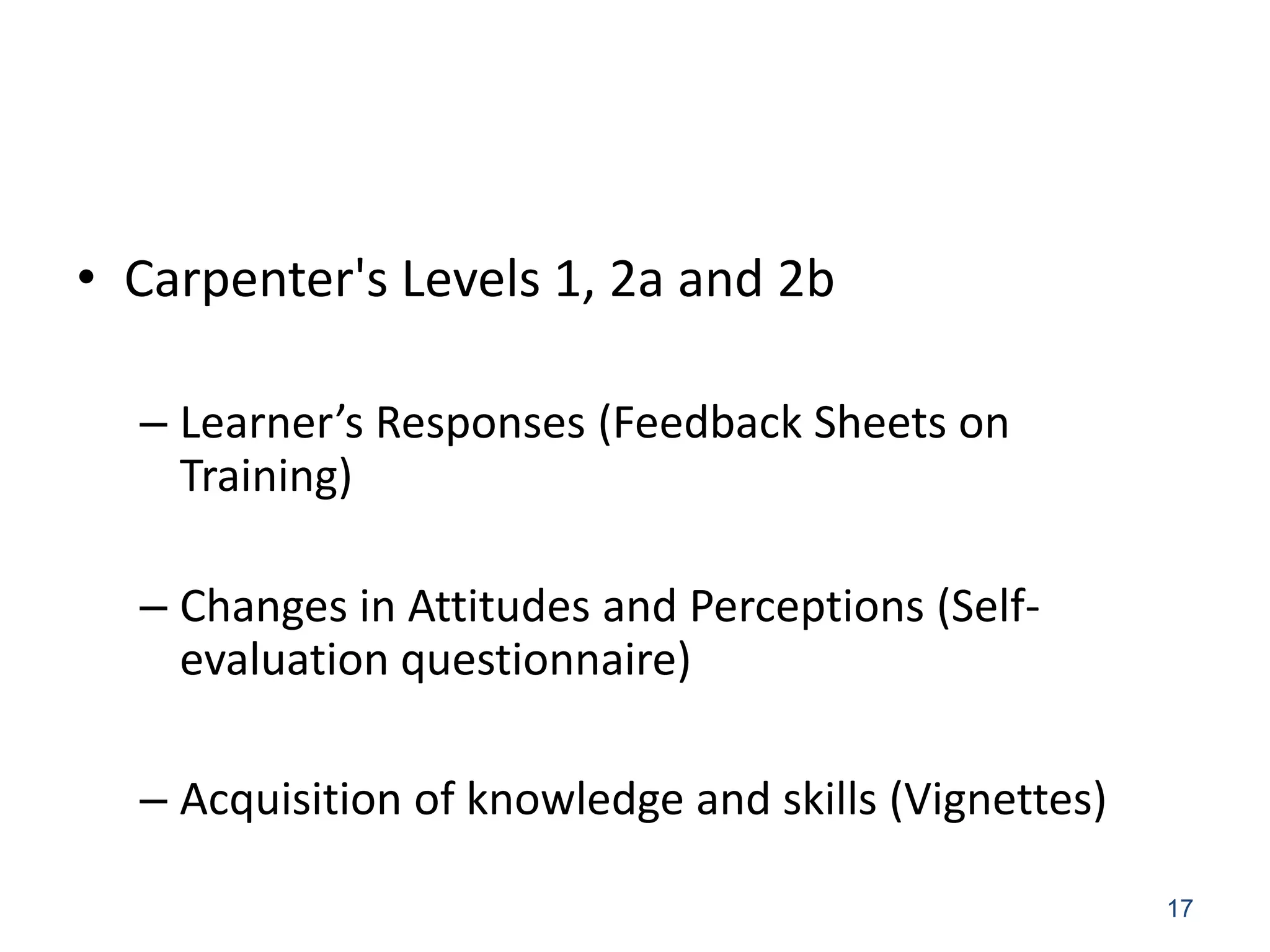
![1. Learners’ Responses to VIG
Very helpful in developing Change of thought
communication skills and around [my]
strengths based positives/strengths
approaches. VIG clearly
has great potential for use
in many roles.
Despite our initial Negatives:
doubts, it has been -Time
beneficial and a real -Technology
Has built not always
privilege to have
[my] had the opportunity
working
confidence to take part.](https://image.slidesharecdn.com/verpprojectwithnewlyqualifiedsocialworkers-121217105834-phpapp01/75/Verp-project-with-newly-qualified-social-workers-18-2048.jpg)
